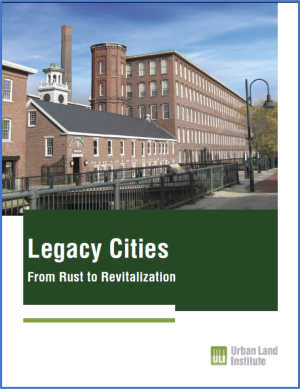ULI is pleased to announce the release of the research report: Legacy Cities: From Rust to Revitalization. This report examines a cross section of small- and medium-sized cities that have used leadership, historic preservation, creative sources of funding, and other strategies to reinvent themselves. Most of these cities thrived during the industrial era, but as the economy shifted to technology and a knowledge-based industries, many of these communities’ lost people, jobs and capital.
Clearly, the shift from manufacturing to technology has hurt many former industrial cities. The globalization of industries such as steel, textiles, auto manufacturing led to the idea of a “Rust Belt”, and yet some cities adjusted to the changing economy far better than others. This report explores how and why some cities have been able to maximize the positive benefits of change, while minimizing the negative aspects. In other words, the cities in this report demonstrate that adversity can breed opportunity. When the mill closes, it does not mean the city has no future.
Written by Tom Murphy, Ed McMahon, and Tom Eitler this document is available at this link.





